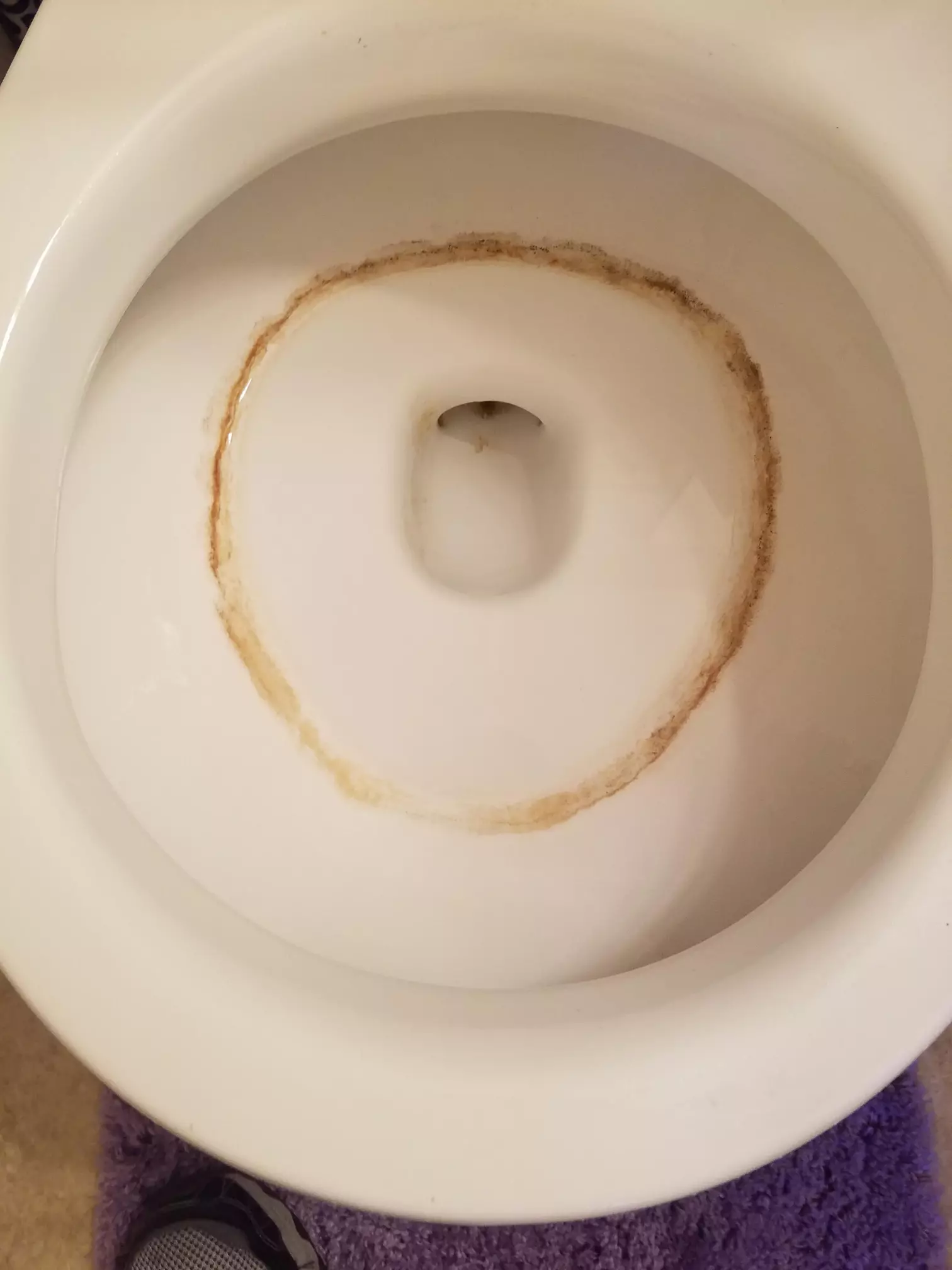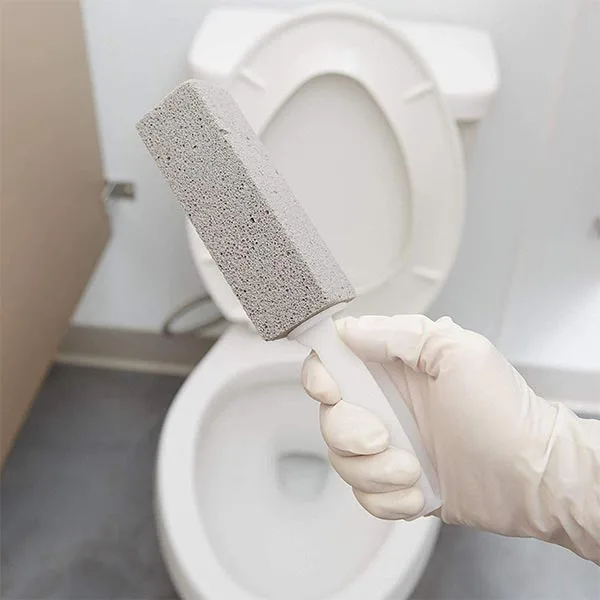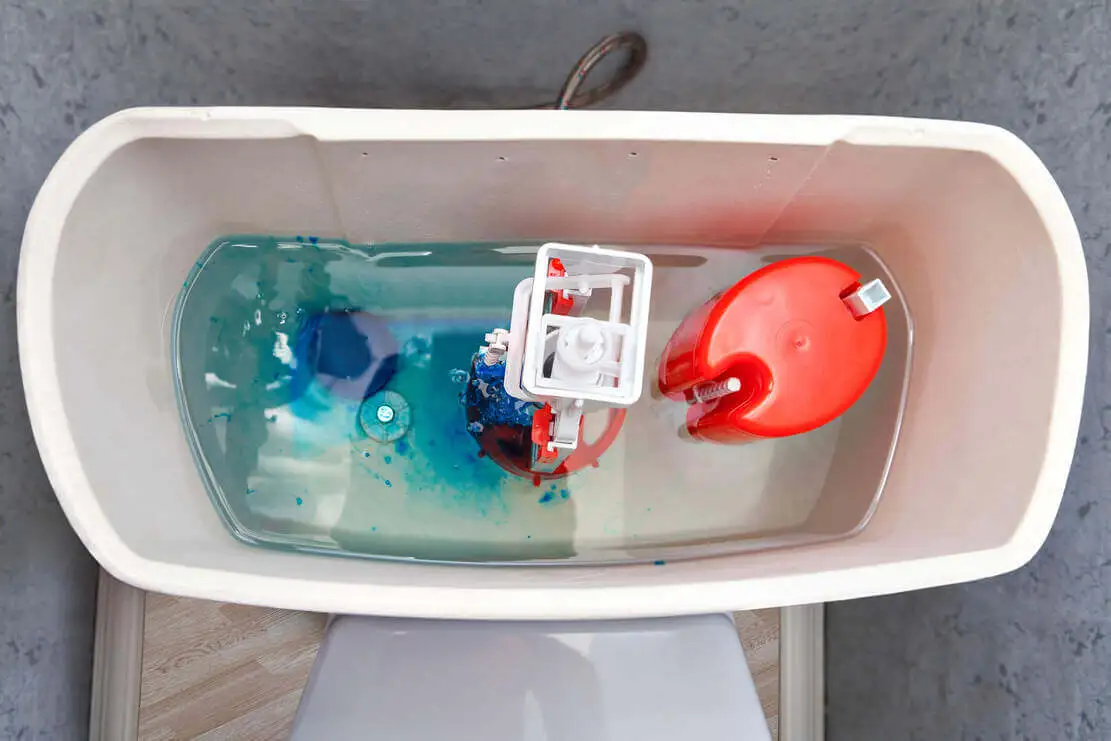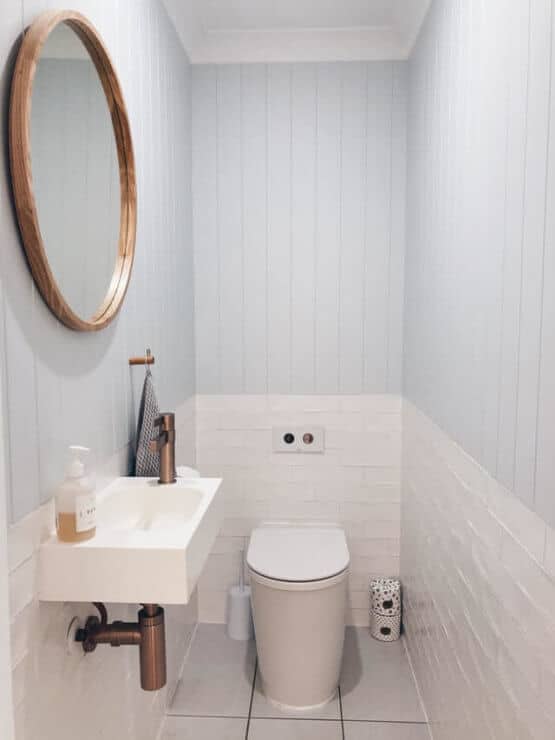Have you noticed orange streaks in your toilet bowl? What causes toilet bowl ring anyway?!
Toilet bowl rings are a persistent and annoying issue that many homeowners face. Regardless of the effort put in to clean, they often seem to linger. A lack of understanding about the cause and prevention of toilet bowl rings can lead to overall frustration.
Fixing this kind of problem should be so hard. By gaining insight into the root cause and learning effective prevention methods, a sparkly-clean toilet is within reach for everyone.
Key Takeaways
- Understanding the cause of toilet bowl rings is essential for effective prevention
- There are various methods to eliminate stubborn toilet bowl rings
- Refreshing and maintaining a clean toilet bowl is achievable with the right knowledge and products
What Is a Toilet Bowl Ring?

A toilet bowl ring is a visible line that forms around the edge of the water level in your toilet bowl. These rings can appear in various colors, including:
- Pink
- Brown
- Green
- Orange/Yellow
- Red
- Grey
The color and texture of the toilet bowl ring correspond to its cause. Some rings may resemble accumulated dirt in the water, while others may give the appearance of stains on the toilet bowl.
It’s important to note that the presence of a toilet bowl ring doesn’t necessarily indicate a dirty toilet. However, being aware of potential causes is essential for prevention and maintaining a visually appealing restroom for you and your guests.
What Causes Toilet Bowl Ring?
Toilet bowl rings can be caused by various factors, with the common link to hard water in your home. Some areas are more prone to hard water.
Approximately 85 % of the United States is affected by hard water, with higher prevalence in areas such as the Midwest and the Southwest. Nonetheless, hard water is a common issue across the country, impacting a significant majority of households.
The cause of a toilet bowl ring may be identified through observation of its color and texture. Here, we discuss the most common causes of toilet bowl rings: fungus, bacteria, and mineral deposits.
Fungus
Bathrooms offer the perfect environment for the growth of microorganisms, such as bacteria, mold, and fungi. These organisms reproduce in moist areas, like the standing water in toilet bowls.
Consequently, a ring forms around the edge where they cling and multiply. Dark green rings typically indicate mold, while dark grey ones suggest the presence of other types of fungus and bacteria. A fuzzy, irregular appearance is a sign of fungal growth, which can increase rapidly if left unaddressed. [source]
Bacteria
Vibrant pink or bright red rings are often caused by the bacterium Serratia marcescens, or pink slime. This organism lives in showers, bathtubs, and toilets, leaving distinct pink stains. These are commonly mistaken for iron stains, which are more orange in color.
If the pink ring persists after flushing the toilet, it is most likely caused by Serratia marcescens. This bacterium can be challenging to remove and is best prevented altogether.
Related: Pink Mold in Shower
Mineral Deposits
Toilet bowl rings can also result from mineral deposits, such as calcium, iron, and magnesium, found in hard water. As the toilet bowl water evaporates, these minerals accumulate on the bowl surface to create rings. Calcium and magnesium deposits typically appear as grey to black stains around the water, while iron leaves orange to red stains. Brown stains at the bottom of the toilet bowl may also be from iron deposits.
The rate at which toilet rings form is influenced by the hardness of the water in households. Well water often contains more minerals than city water, as city residents frequently use water softeners.
Although water softeners are effective in removing a significant amount of minerals, they cannot eliminate all traces. Therefore, stains may appear regardless, especially if the toilet is not cleaned or used regularly.
Related: Brown Stain in Bottom of Toilet Bowl
How to Eliminate Toilet Bowl Rings

Among the solutions for removing toilet bowl rings we include pumice stone, vinegar, borax, and bleach. Vinegar will attack magnesium and calcium carbonate and make them go away. Pumice stone is a proven solution for long-term hard stains.
Apple cider vinegar – mild stains
Vinegar is a common household item that may clean toilet bowl rings. At first, turn off the little valve behind the toilet and flush water from it. Then add some toilet paper and pour vinegar on it.
Leave everything for a few hours or overnight. All you need to do is open water and flush your toilet a couple of times. Vinegar can change the chemical composition of the deposits and make them easier to scrape off by flushing.
Borax – persistant stains
Borax is a more potent cleaning agent than baking soda, making it an ideal solution for persistent stains.
- Sprinkle a quarter cup of borax into the toilet bowl and swish it around with a toilet brush.
- Add one cup of vinegar, swish again, and let the mixture sit for about 20 minutes.
- Use the toilet brush to scrub away any remaining stains, or alternatively, use a sponge for tougher spots.
- Flush the toilet to rinse away the mixture.
Bleach Technique – stubborn stains
Bleach is a strong substance that must be handled with care. Always avoid mixing bleach with other chemicals, as this can create adverse reactions. Pure bleach should be used, rather than cleaners with bleach, as these can cause mold and bacteria stains to become permanent.
Note: This method may not be suitable for toilet bowls made of sensitive materials, such as porcelain.
- Pour one cup of liquid chlorine bleach into the toilet bowl and let it sit for about half an hour.
- Use a toilet brush to scrub the bowl thoroughly.
- Flush the toilet, ensuring that all of the bleach is rinsed away.
Pumice stone – hard stains
A pumice stone is well know cheap product that removes stains including bowl rings. Wet pumice stone won’t scratch and damage the enamel toilet bowl. The only thing that you may experience is an unpleasant sound while cleaning.
Another alternative to pumice stone can be cleaning pads with duraform that you may order online as well.
What Not To Do?
It’s not a good idea to mix and pour every cleaning chemical that you have in your bathroom. You may get exposed to something called “Mustard gas” without even knowing about it.
Mustard gas, also known as sulfur mustard, is created through a chemical reaction involving sulfur dichloride, ethylene, and hydrochloric acid. This results in the formation of a yellow-brown oily liquid that can be dispersed as a gas. Mustard gas is a potent chemical warfare agent that causes severe skin, eye, and respiratory damage.
Related: Hydrochloric Acid To Clean Toilet Bowl
Mixing bleach with other cleaners, such as ammonia or acids, can also produce toxic gases that are harmful to breathe in. These gases can cause respiratory problems, irritation to the eyes, nose, and throat, and in severe cases, can lead to chemical burns or even death.
It’s important to always read and follow the instructions on cleaning products and never mix bleach with other chemicals to avoid these dangerous reactions.
How To Prevent Toilet Bowl Ring

Maintaining a clean toilet is essential for both hygiene and preventing toilet bowl rings. Avoid causing clogs by not flushing paper towels or disposing of objects in the toilet bowl, as clogs can lead to stagnant water and the growth of microorganisms responsible for toilet bowl rings.
To prevent buildup and the growth of microorganisms inside the bowl, consider using the toilet gel stamps. cleaner dispenser that hangs over the edge of the toilet bowl.
They are easy to install and they last longer than regular traditional cleaner dispensers.
If a plastic cleaner dispenser ends up in your toilet bowl, it may clog it!
Another effective method for preventing toilet bowl rings is cleaning your toilet with borax once a week. Before going to bed, pour a cup of borax into the toilet bowl and use a toilet brush to spread it around the bowl, including its sides and under the rim.
Let the borax sit overnight, then lightly scrub the toilet with a brush in the morning and flush to rinse everything. This technique helps prevent not only toilet bowl rings but also stains and odors, ensuring a consistently clean toilet.
Installing a water softener system can eliminate and filter hard water in your household, so it won’t get to your toilet bowl.
Related: Toilet Bowl Smells Like Urine
Bottom Line
We talked about the most common reasons on what causes toilet bowl ring. Some of the solutions we provided may help you to remove the stubborn ring.Opting for natural cleaning methods is preferable to using harsh chemicals.
However, prevention is always better than attempting to remove these stubborn stains. Regular maintenance of your toilet bowl not only keeps it looking clean and shiny.
Related: How To Unclog Toilet When Nothing Works

Michael Davis is a heating & plumbing expert who currently works as independent contractor in SC. He also writes for Plumbertip.
For almost 10 years he worked on various plumbing tasks across South Carolina.


